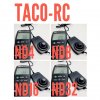Please also refer to this
link (
AAPhoto's post) that explains how to choose a proper filter to suit your needs:
When filming video with a drone, the goal is to make your shutter speed 2X that of your frame rate. If you're shooting at 30fps for example, you would look for a 1/60s shutter speed (shown as 60 in the app settings). This provides a nice smooth transition between frames. Without an ND filter, on a bright day, your camera will most likely use very high shutter speeds, maybe in the 2000 to 4000 range (1/2000 of a second to 1/4000 second) depending if you're looking into the sun at all, against bright white snow, etc etc. What this does is it makes each video frame extremely sharp... stopping motion every time it takes a picture. The effect this has on a video is that it looks more like a really fast slide show as opposed to a motion picture. It may not be noticeable to an amateur eye, but once you see the difference ND filters can make, you can quickly spot the difference and will never go back to not using them. The different strengths of filters (ND4, ND8, ND16, ND32, etc) adjust your shutter speed by reducing the light allowed to hit the camera sensor. If one doesn't reduce the shutter speed enough, you would try the next one, etc. There are ND calculators available to help you figure out the filter that should work best based on your shutter speed without an ND filter installed.
Circular Polarizers, on the other hand, have a different purpose. They are used to cut down on reflective light. A good example of this is shooting over water. Without a polarizer, the lake/ocean/pond may appear a shimmering white shape in the video. With a polarizer, the bodies of water appear as their natural blue color because the reflective light is blocked by the filter. Polarized filters also bring out color that may otherwise be washed out due to light reflections, so they enhance foliage, blue skies, etc. The circular polarizers have variable strength so depending on how the filter is oriented will determine the strength of the effect. In the blue sky example, you can go from washed out light blue color to a dark, almost unrealistic, blue color. You can hold it in front of your eye and turn it while looking at the sky (90 degrees to 180 degrees from the sun) to see the different effects of the filter so you can figure out which is the best orientation for what you're going to do. I mention looking away or perpendicular to the sun because CP filters do not typically work when looking directly at a light source. Hope this helps.
Thanks
AAPhoto
















